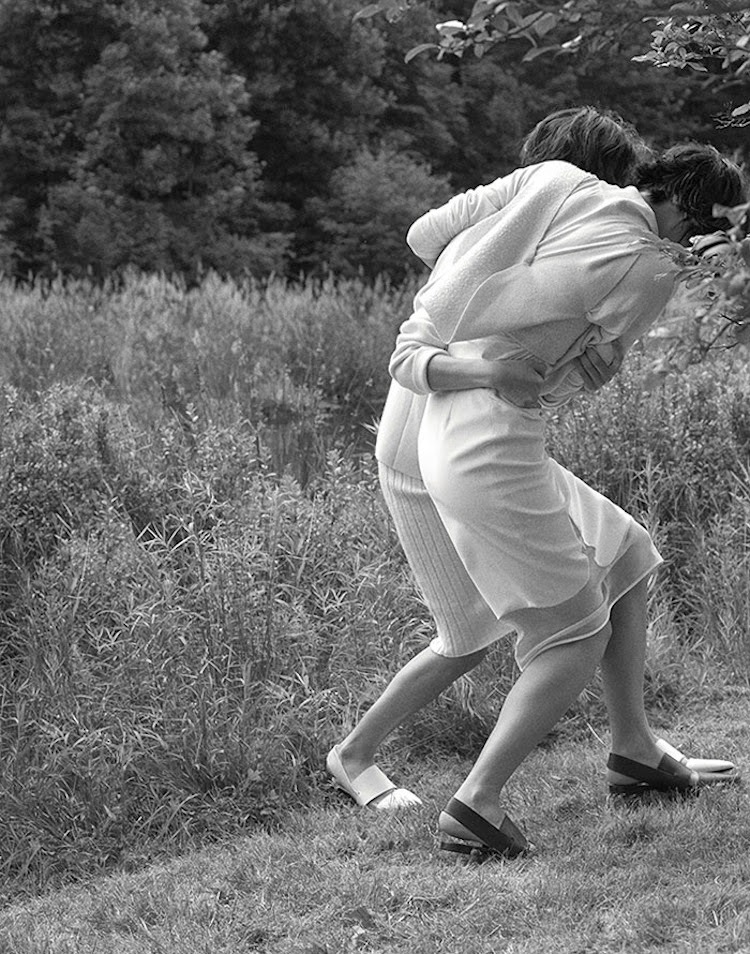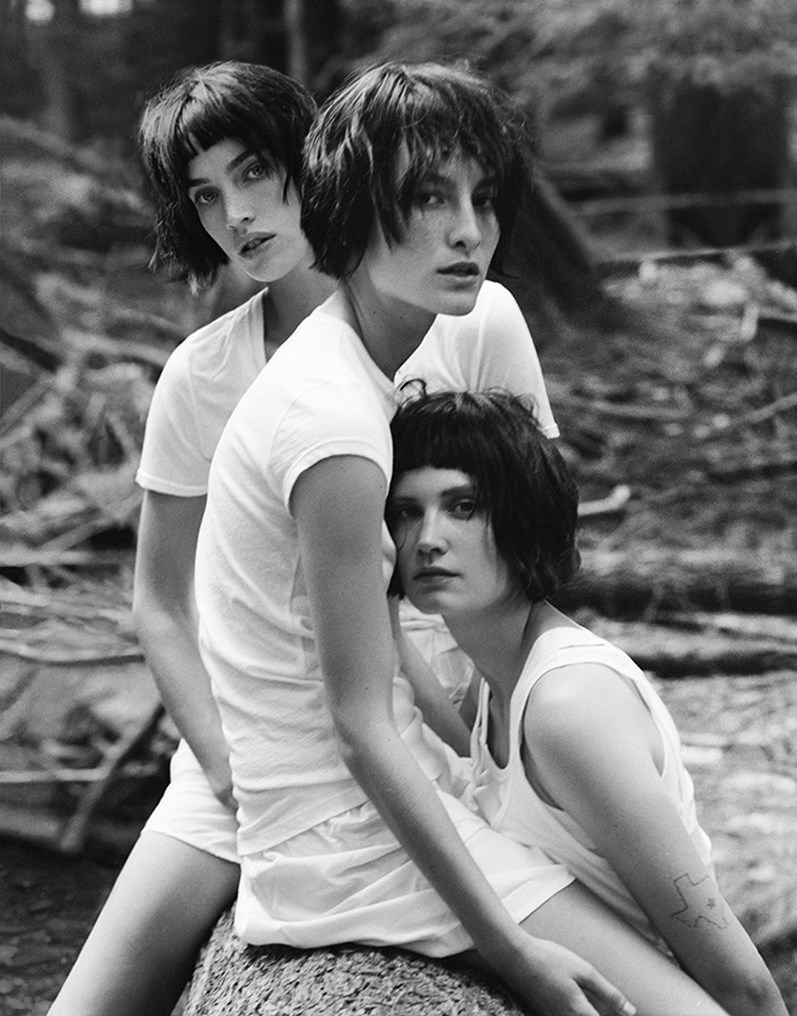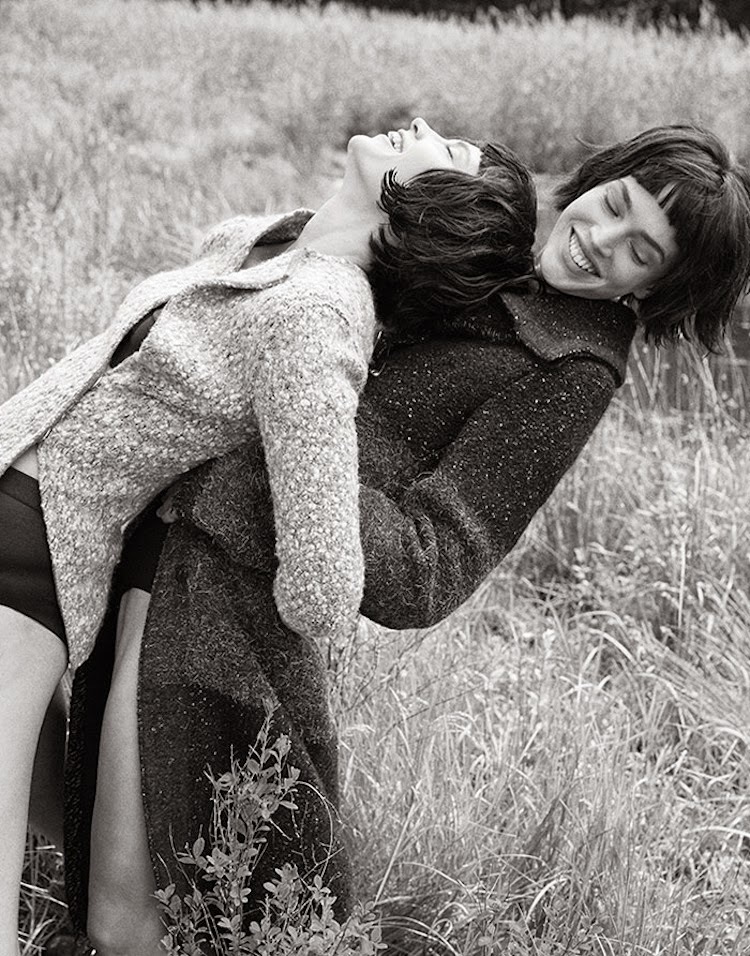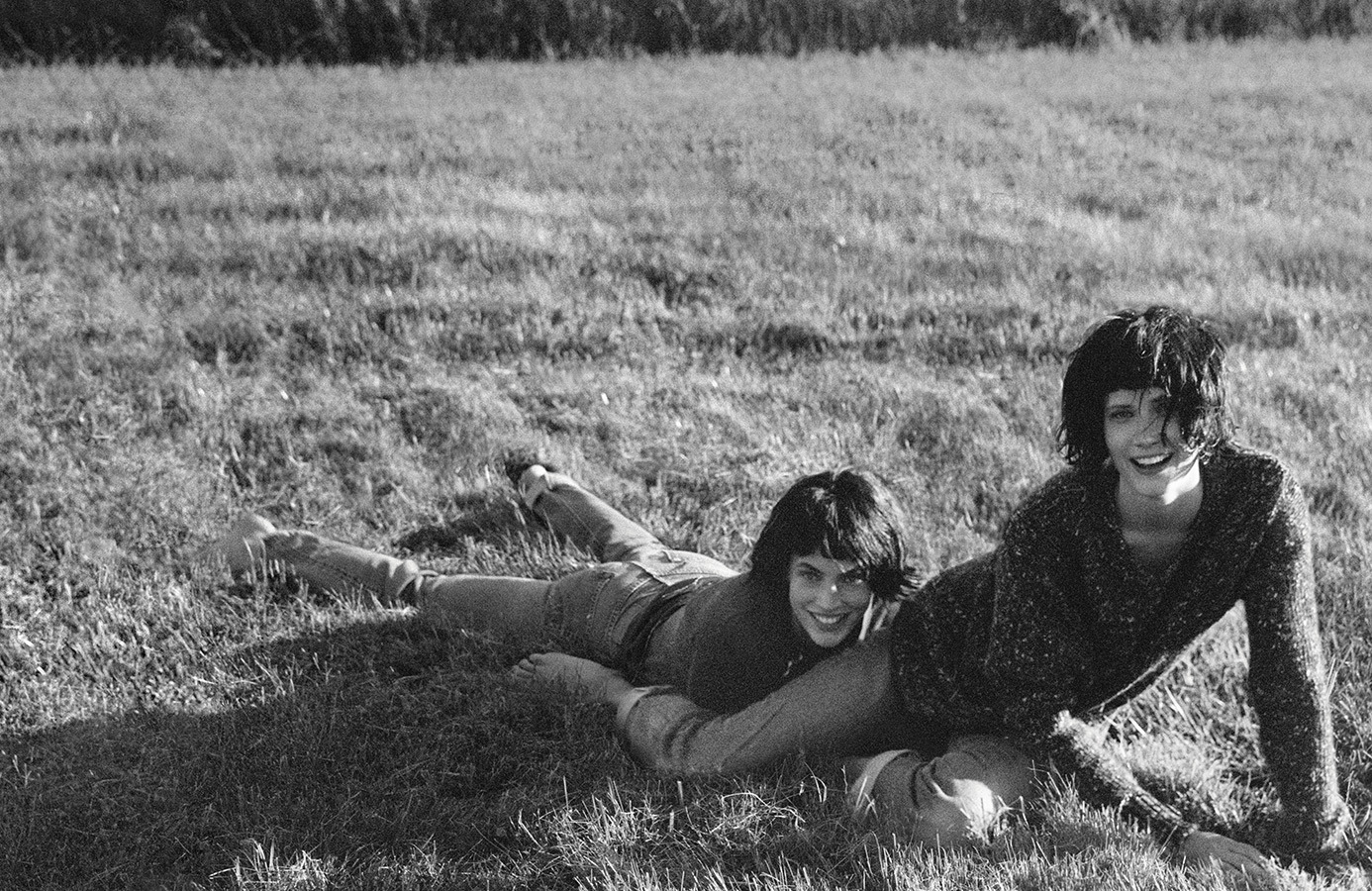Last month, Red Hook Labs didn’t just host Jamie Hawkesworth’s first solo exhibition at its gallery, the institution enlisted the young photographer as the first guest artist in its School Lab series — a program designed to educate local students and provide guidance for aspiring fashion talent. Red Hook Labs founder (and co-founder of leading agency Art + Commerce) Jimmy Moffat has enlisted some seriously acclaimed artists for the intimate series; former i-D Fashion Director Edward Enninful followed Hawkesworth for the second School Lab on Styling Careers. This weekend, another i-D contributor — NYC-based photographer Cass Bird — joined Moffatt in Red Hook.
Accompanied by her wife, Wall Group director Ali Bird, their two children Leo and Mae Black Bird, and their two hula hoops, Cass shared the colorful stories behind some of her favorite images. Answering questions regarding her editing process and approach to collaborating with editors, Cass spoke openly with up-and-comers about why genuine human connections remain at the core of her photography. Here are five things we learned.

It’s gonna take a while: “I had the most un-glamorous start,” Cass said when one student asked about her beginnings. A Los Angeles native, Cass started out by taking headshots for aspiring actors. Her first commission? TV Guide. “I was like ‘yes, I am arriving,'” she laughed. “In the very beginning, I was making work just to get work; it wasn’t driven by my own curiosities about people, it was literally, ‘how do I make money doing this?’ I think that is probably why the first 10 years of my career felt so frustrating. I wanted to be a portrait photographer and wasn’t finding a lot of opportunities.” It wasn’t until 2003 — when she worked on a collaborative project with school friend JD Samson, “JD’s Lesbian Calendar,” — that things started to take off. “I picked up photography not as an aesthetic medium at all,” Cass explained, “I picked up a camera solely just to hang out with you.” To her, it’s still about capturing that connection. “I didn’t have resources, but I had dreams to photograph beautiful people — how do you get from there to there? It slowly unfolded, but [it happened] as I got close to the beautiful people who were close to me.”

Look for ideas everywhere: How did she think to use choppy wigs or an ATV off-roader in an i-D fashion story? How does she prepare to shoot spontaneous moments of freedom? “I try to practice TM, transcendental meditation, and a lot of the times I’ll get some inspiration out of that,” Cass explained. “Sometimes it’s the worst, craziest ideas, like let’s dye all their eyebrows blue!” She emphasized that her creative process stems from a feeling rather than concrete concept, so it’s about being open to every experience. “I think that I have the best results when there’s pressure in the sense that I don’t know what I’m doing, I’m just looking for it. When I do a lot of preparation about what I think I should look like and go after that, it usually falls a little flat,” Cass explained. “I just like to create an environment where we can take physical and emotional risks — feel free.”

Find your people: “15 years ago, I was stalking editors, and they were unhappy about it!” Cass confessed. “They never gave me an assignment, and still haven’t.” But instead of extending yourself to anyone and everyone whose contact information you can get, she told aspiring photographers, focus on establishing relationships with the editors and collaborators who will understand, nurture, and push you. “It’s such a big emotional, financial, spiritual risk to pursue your art. So for me, it really is about finding your people — people who you feel see that thing in you that you want them to see, even if you can’t articulate it to yourself.”

And listen to them: “I think my pictures feel like they’re of the moment,” said Cass, “but I can sometimes be all over the place and come out with something that looks like two different fashion stories I shot at the same time. Editing is a huge component, because I want it to feel like my voice and story.” That editing process happens in “bursts,” narrowing down the work from hundreds of shots into a cohesive body. “I invite feedback from people I believe understand what I’m trying to achieve,” Cass explained, citing Ali and her longtime studio manager as great examples of critical eyes she values. “I’m someone who needs a sounding board to bounce off of. I’m open.”

But most importantly, trust yourself: Though Cass’ process is, by nature, collaborative and fluid, she says others have helped her strengthen her sense of self. “If someone edits you out of your comfort zone or out of your aesthetic, you’ll feel it,” she explained. “That [feeling] just reinforces what me feels like in a picture.” And as her work has evolved to feature more fashion elements, her early drive to capture moments of connection is still that central element. “[It’s] is always going to be about finding the woman, finding the human, finding the community or the experience.”

Credits
Text Emily Manning
Photography Cass Bird
Styling Vanessa Traina
Hair Tamara McNaughton at Management + Artists using Oribe Hair Care
Make-up Maki Ryoke at Tim Howard Management
Styling assistance Kadeem Greaves, Yohana Lebasi.
Hair assistance Ryan Mitchell
Make-up assistance Setsuko Tate
Models Drake Burnette at DNA Models, Crista Cober at Next, Heather Kemesky at The Society Management
[The What is Love? Issue, i-D no. 333. Fall 2014]
